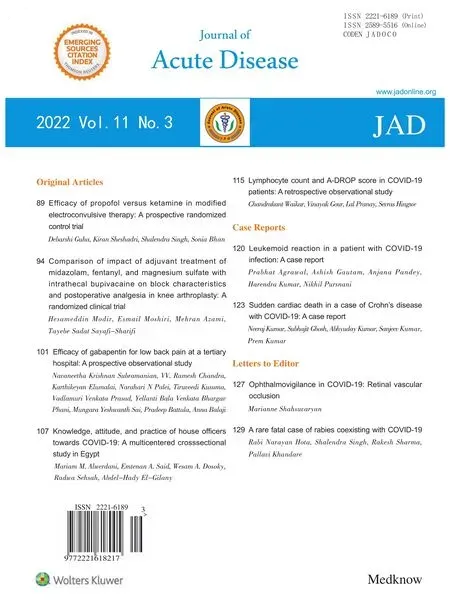Ophthalmovigilance in COVID-19: Retinal vascular occlusion
Marianne Shahsuvaryan
Department of Ophthalmology, Yerevan State Medical University, Yerevan, Republic of Armenia
Severe acute respiratory syndrome coronavirus 2 (SARS-CoV-2)infection could also cause ocular complications in 2% to 60% of infected patients. The need for an efficient COVID-19-related ocular finding detection and management pathway has sparked interest and activity in research looking for SARS-CoV-2 impact on all eye structures, especially the retina[1] that serves as an entrance gate,since retinal epithelium, arteries, and veins containing angiotensinconverting enzyme 2 represent a target for SARS-CoV-2 virus. The pathophysiological process is caused by a myriad of inflammatory reactions that damages retinal vessels through complex dysregulated functions of endothelium, platelet followed by hypercoagulability[2]manifesting as a central retinal artery (CRAO), central retinal vein occlusion (CRVO), and branch retinal vein occlusion in patients suffering from systemic polymorbidity or generally healthy without vascular risk factors, as well as young persons. It is still the case that the uncontrolled spread of COVID-19 leads to the evolution of new variants that continue to cause CRAO/CRVO[3,4] dominantly presented by cases of retinal vein occlusion[5].
Obstruction occurs in the central retinal vein, although one or two branches of involvement may occur. Papillophlebitis as a clinical variant of CRVO in a healthy young adult with a history of recent disease and recovery of COVID-19 as the only factor of inflammation and hypercoagulability was lately evidenced[5].
In addition, in severe COVID-19 cases, bilateral CRAO and CRVO have been reported. A recent review on the subject describes retinal vascular occlusion as common among those initially without any sign of viral infection, with its subsequent development or simultaneous presentation with any degree of disease severity, or as a post-COVID.Besides, COVID-related CRAO and CRVO dominantly affect those aged 25 to 50 years, although ocular involvement may occur at any age.
Currently, available findings reflecting the consensus add more to the body of knowledge demonstrating a causal relationship between COVID-19 morbidity and retinal vascular occlusion.
At present, available findings underscore the need for ophthalmologists and health care workers to suspect such evidenced ocular comorbidity in COVID-19 cases, like CRAO/CRVO. Special attention will be paid to CRAO cases like a real emergency in ophthalmology. We suggest bearing in mind this relationship. Taking into account that retinal vessel networks represent a target for thromboembolism caused by the SARS-CoV-2, ophthalmologists should remain vigilant, especially with CRAO and CRVO patients with asymptomatic disease, and a rapid antigen test for COVID-19 should be done.
Timely detection and proper treatment of patients with vas occlusion of the retinal artery and/or vein can lessen ocular and viral disease severity, and help achieve earlier resolution on one hand, and on other hand prevent the spread of infection in health and general communities.
Conflict of interest statement
The authors report no conflict of interest.
Funding
This study received no extramural founding.
 Journal of Acute Disease2022年3期
Journal of Acute Disease2022年3期
- Journal of Acute Disease的其它文章
- A rare fatal case of rabies coexisting with COVID-19
- Efficacy of gabapentin for low back pain at a tertiary hospital: A prospective observational study
- Leukemoid reaction in a patient with COVID-19 infection: A case report
- Sudden cardiac death in a case of Crohn's disease with COVID-19: A case report
- Efficacy of propofol versus ketamine in modified electroconvulsive therapy: A prospective randomized control trial
- Comparison of impact of adjuvant treatment of midazolam, fentanyl, and magnesium sulfate with intrathecal bupivacaine on block characteristics and postoperative analgesia in knee arthroplasty: A randomized clinical trial
